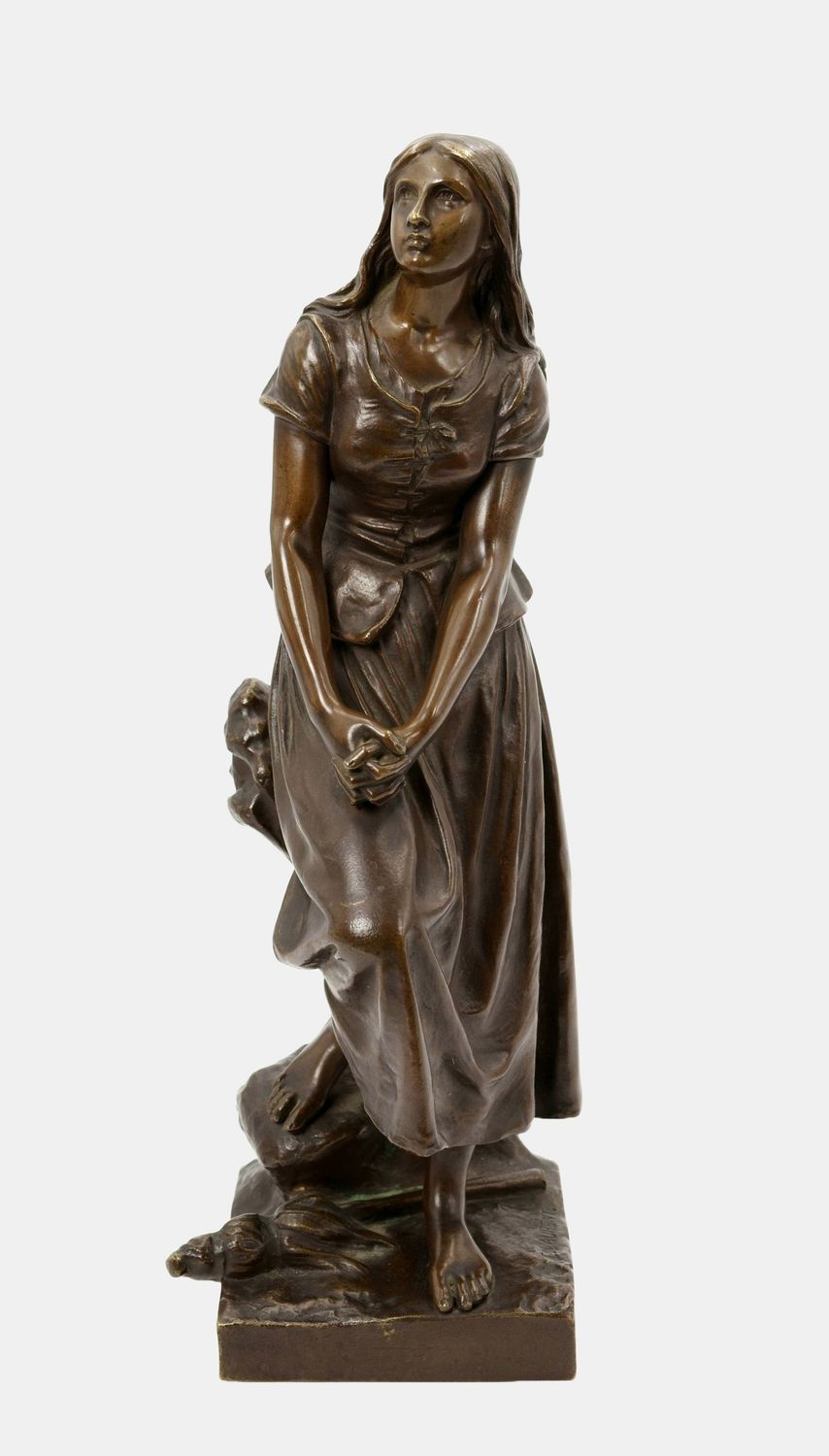Eugène Laurent (1832-1898), Joan of Arc, c. 1880
Eugène Laurent(1832 Gray - 1898 Paris), Joan of Arc , around 1880. Brown patinated bronze on a cast rectangular plinth with tree trunk and distaff. 40 cm (height) x 15.5 cm (length) x 15.5 cm (depth), weight 6.1 kg. Signed “E.[ugène] Laurent.” on the plinth and inscribed “HZ” on the reverse.
- somewhat stained due to patina, traces of oxidation behind the distaff, slightly rubbed in places, overall still in very good condition for its age
- The Liberating Power of Faith
At the age of 13, Jeanne, a peasant girl born in Lorraine around 1412, heard the voices of Saints Catherine and Margaret and the Archangel Michael telling her that she had been chosen to liberate France from English occupation. By 1428, Henry VI's troops had advanced to the Loire and besieged Orléans, a strategic city for the further conquest of France. Joan of Arc went to the exile of Charles VII and, with the king's consent, led the French army into battle against the besiegers. After four days of fighting, the English were defeated and Orléans was liberated. Other victorious battles followed, until in 1430 she fell into the hands of the enemy, who had her executed as a witch by the Inquisition. In May 1431, Joan of Arc was burned at Rouen.
After the final expulsion of the English, the "Maid of Orleans" was rehabilitated by the Church in 1456. She was finally canonized in 1920. By then, Joan of Arc had become a national heroine and the patron saint of France. After the French Revolution, the strengthening of the nation-state and the Franco-Prussian War of 1870-71, Joan of Arc was again venerated and depicted in numerous bronze statues.
Eugène Laurent depicts the young girl listening to the voices of the saints who reveal her destiny. With her eyes wide open, she gazes at the sky as if she were looking at the revealed future. Her hands are clasped in prayer, indicating her willingness to face her destiny. Leaning against a tree trunk, she treads with one foot on a raised stone, which, together with her upward gaze, gives her an upward movement that announces her higher mission. At the same time, however, she steps down from the stone to the earth, emphasizing her earthly mission, for which she has already taken the first step. In doing so, she steps over the discarded distaff, which refers to her "lower" origins and belongs to the life she has now left behind.
Laurent manages to capture the fateful emotion that makes us look at Joan of Arc in awe, even though she is a simple peasant girl. Even if the design is aimed at the overall impression, the artist has nevertheless worked out certain details, such as the tied waistcoat, very realistically and, in addition to the skin, has particularly depicted the material quality of the textiles.
About the artist
Eugène Laurent studied at the École des Beaux-Arts in Paris, where he won a prize in 1860. He then joined the studio of Jacques Antoine Theodore Coinchon. As a freelance artist, he supplied the Paris Salon with statues, portrait busts, and medallions from 1861 to 1893. He also created large sculptures such as the monument to Jacques Callot in Nancy (1877) and the statue of François Boucher at the Paris City Hall.

